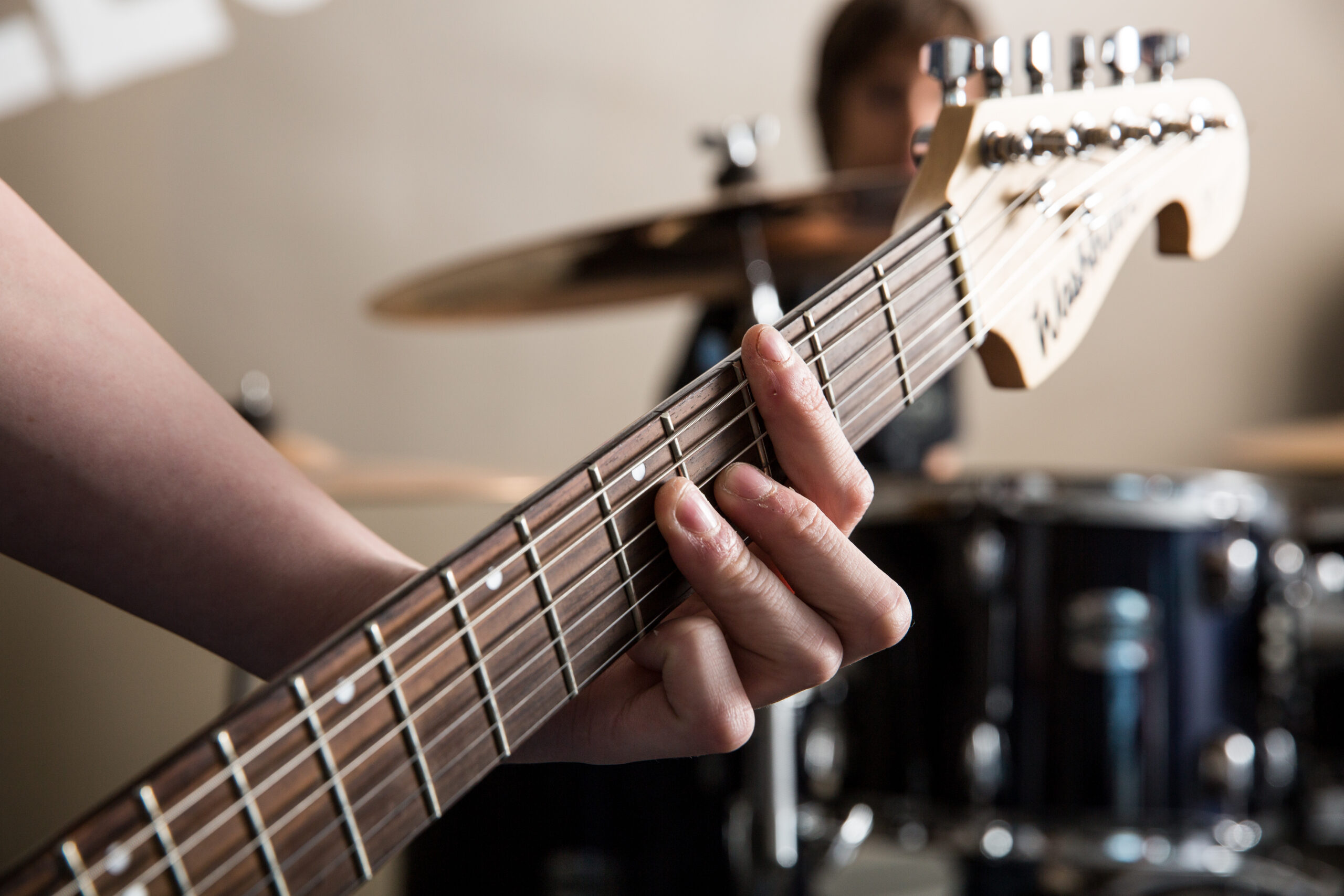April 09, 2015
How to Play Guitar Chords: Important Tips for Beginners


Learning how to play guitar chords begins with the basics, such as learning the names of each guitar string and how to read chord diagrams. Whether you’re taking guitar lessons or learning on your own, playing chords is an important first step. Learning how to play guitar chords will help you become a great guitar player.
The term “chord” refers to a combination of three or more notes played at the same time by strumming the guitar’s strings. There are many different guitar chords, from beginner level to advanced. Each guitar chord creates a unique sound and mood. As you learn, you’ll discover that certain chords seem to have a natural “fit,” leading to strong melodic structures or “chord progressions” used in many popular songs.
Like any musical instrument, it can take years of practice and music lessons to master the guitar. However, with basic knowledge of chords, you can learn to play a simple song within minutes. Ready to embrace your inner rock star? Grab your guitar, pick, and get started.
The following tips will help you learn how to play guitar chords:
- Learn the names of the guitar strings
- Assign numbers to your fingers
- Learn to read chord diagrams
- Start with easy major chords
- Practice, practice, practice!
These steps are a solid introduction to guitar. By learning guitar chord basics and practicing, soon you’ll be able to play anything.
Learning How to Play Guitar Chords: Getting Started
Learn the Names of the Strings
Although some guitars can have 12 or 8 strings, most beginners start with a six string guitar. This is considered the standard for both acoustic guitars and electric guitars. To learn to play chords, you’ll need to learn the names of each of the six strings. It’s also recommended that you learn how to tune your guitar’s strings — you can do this with one of the many tuning devices available at any music store, or use a tuning app.
Once your guitar is tuned and ready to play, run your fingers or your pick slowly down the strings. This is called strumming. Familiarize yourself with the sound of an “open” guitar, with no chords, as a baseline. Then pluck each string individually and learn its unique sound.
Starting from the top of the guitar neck and moving down, the strings are numbered 1 through 6. You’ll notice that the strings change in pitch, from highest to lowest, and the lower strings are also thicker than the high ones.
In addition to the numbers assigned to each string, the strings have a note. From highest to lowest, they are:
- E (string 1)
- A (string 2)
- D (string 3)
- G (string 4)
- B (string 5)
- E (string 6)
To remember the notes associated with each string, try using a mnemonic device such as “Eddie Ate Dynamite, Good Bye Eddie” or “Eat All Day, Get Big Easy”.
Assign Numbers to Your Fingers
Guitar chords are created when you play a minimum of three notes together at the same time. To do this, you’ll press your fingers down on the guitar strings at various points along the fretboard. But how do you know where to press?
When you’re learning how to play guitar chords, you’ll start by learning to read chord diagrams. Before you can read chord diagrams, however, you need to number the fingers on your left hand. Although there are different techniques for this, most guitar schools keep it simple.
Your index finger is 1, ring finger is 2, middle finger is 3, and little finger is 4. Remember this for the next step.
Learn to Read Chord Diagrams
Also known as chord charts or tabs, a chord diagram is a visual representation of the neck of your guitar. It shows all six strings, a certain number of frets, and numbered dots to indicate finger placement, also known as the “chord shape.”
Chord diagrams may or may not include numbers assigned to the strings — if not, the bottom line on the diagram corresponds to the low E string. If you’re confused, just hold your guitar (if you’re a right-handed player) and tilt the neck towards you until the fretboard is flat. This will help you see how the diagram corresponds to the actual instrument.
See where each finger is placed on the chord diagram and copy it. For example, if the diagram shows a circle labelled “1” on the first fret on the first string, that’s where you should place your index finger for that chord.
Often, certain guitar chords are only played on four or five strings instead of all six. When this is the case, the chord chart will usually show an “X” over the strings you shouldn’t play.
Start with Easy Major Chords
Now that you’ve learned about strings, finger placement, and how to read chord diagrams, it’s time to start playing! Most instructors believe that the best chords for beginners are these five major chords: A, E, D, C and G.
As Woody Guthrie once said, “If you play more than two chords, you’re showing off.” With these five beginner chords, you can learn to play many popular songs across a variety of musical genres. You can also begin to write your own songs. Each of these beginner chords sound great together, so you can have fun experimenting with the order in which you play them.
As you look at the diagrams for these chords, you’ll observe that they’re relatively similar. This means it’s easy to switch between them. You can use A, E, D, C and G to build your confidence as a player and get used to other aspects of playing guitar, such as picking and strumming.
Practice, Practice, Practice
Finally, it’s time to practice. As you master the basic chords for beginners, you can move on to more advanced lessons such as barre chords, minor chords, and power chords. Soon, you’ll know guitar chords by heart and learn to play any song.
To learn more about how to play guitar chords or any other aspect of guitar playing, schedule a lesson with a Music and Arts instructor near you. Visit your local Music and Arts location, go online or call 888-731-5396 to setup an appointment.







